English For All
Ozgu Ozturk is an English teacher in Istanbul. She graduated from Gazi University, ELT Department in 2004 and got her MA degree in ELT in 2021. She coordinates Scientix, Etwinning and Erasmus+ international school partnership projects. She is a STEM trainer, Dyslexia Trainer, P4C facilitator and a researcher as an EFL teacher. She is one of the Scientix Ambassadors of Turkey, European Climate Pact Ambassador of Turkey, a certified National Geographic Educator and Apple Teacher. She is one of the team members of the Education Information Network, EBA which provides digital materials for remote teaching. She is the Turkish delegate on Transatlantic Educators Dialogue by European Union Center and Illinois University at Urbana- Champaign. She writes blog posts for the TeachingEnglish blog by the British Council. Email: ozguozturkk@gmail.com
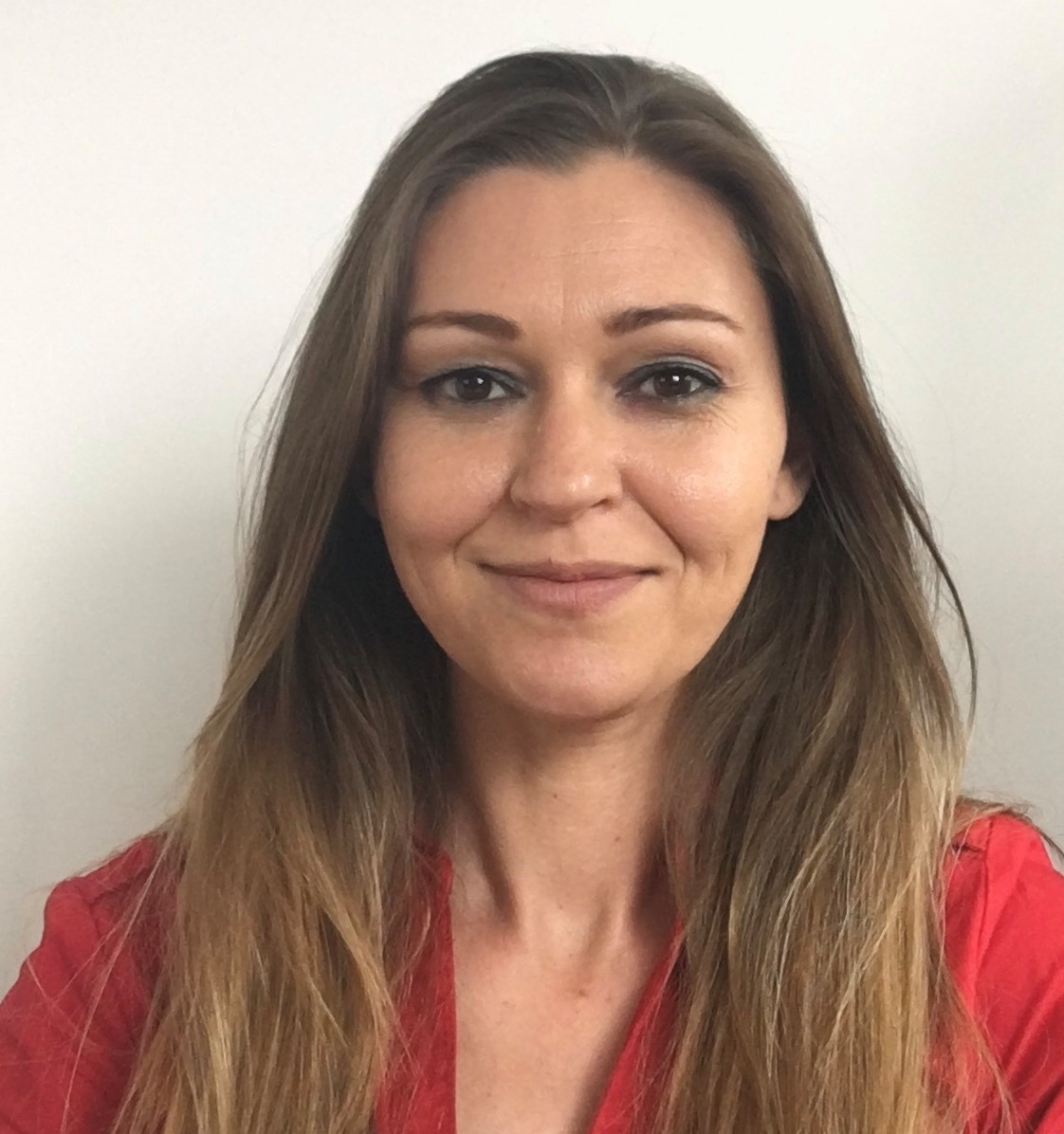
Introduction
As English teachers, we may have some students who need additional attention as they have some learning difficulties, particularly the difficulties of second language acquisition. Five to ten percent of any given population is estimated to have a degree of learning disability, although it is difficult to recognize these difficulties much of the time. At this point, English teachers have dual duties. Besides teaching the curriculum, they should also assist these students without any special knowledge of pedagogical material. Well, in Turkey, the case is like that. Students with Special Learning Disabilities are acknowledged as inclusive students in many countries and receive education in normal schools with regular pupils. This is vital and for the good of the kids who have SpLDs. For the educators of these students, however, it is a challenging issue. Not only because English as a second language teachers do not take courses at educational institutions, but also because they do not obtain any in-service training on the subject. With these students, they are supposed to schedule specific lesson activities, they are supposed to create materials according to their needs. But, they do not have the proper information. That is to say, students with SpLDs may need a more individualised and tailored approach to learning. Thus, we have designed this project with the aims mentioned in the previous question.
Learning disabilities
Learning disability, learning disorder, or learning difficulty (British English) is a condition in the brain that causes difficulties comprehending or processing information and can be caused by several different factors (Learning Disability, 2021). No matter how the terms are used interchangeably, they have some differences in meaning.
“Learning Disabilities” is an “umbrella” term describing a number of other, more specific learning disabilities, such as dyslexia and dysgraphia which are various conditions that interfere with an individual's ability to learn and so result in impaired functioning in language, reasoning, or academic skills (such as reading, writing, and mathematics) and that are thought to be caused by difficulties in processing and integrating information. (Learning Disability, n.d.)
Disorder is an abnormal physical or mental condition. (Learning Disorder, n.d.) And, learning difficulty is (chiefly British) a condition that makes learning difficult. (Learning Difficulty, n.d.
The Learning Disabilities Association of America states that:
“A learning disability is a neurological disorder that affects one or more of the basic psychological processes involved in understanding or in using spoken or written language. The disability may manifest itself in an imperfect ability to listen, think, speak, read, write, and spell or to do mathematical calculations.” (Types of Learning Disabilities – Learning Disabilities Association of America, n.d.)
Having an issue with the content or structural order of the words has an effect on learning. As it is unlikely that someone has been able to explain his understanding or produce written language, the reader is likely to be grappling with comprehending and producing written language, as well.
There are two types of learning disabilities: non-verbal and verbal. Non-verbal learning disabilities include disabilities from psychomotor difficulties, and verbal disabilities can be defined as Language- Based Learning Disabilities. Language-based learning disabilities or LBLD are "heterogeneous" neurological differences that can affect skills such as listening, reasoning, speaking, reading, writing, and maths calculations. (Vinson, 2006)
Most common subtypes of learning disabilities include Dyslexia and Dysgraphia. In order to define them fundamentally, we can say that LBLD consists of dyslexia which involves difficulties in acquiring and processing language that is typically manifested by a lack of proficiency in reading, spelling, and writing and is often familial learning disability (Dyslexia, n.d.), and dysgraphia which is an impairment of handwriting ability that is characterised chiefly by very poor or often illegible writing or writing that takes an unusually long time and great effort to complete (Dysgraphia,n.d.)
Learning disorders are affected by genetic and/or neurobiological factors that alter brain functioning and impair one or more cognition-related cognitive functions. These processing difficulties can obstruct the development of basic skills such as reading and writing. They are frequently capable of impairing higher-level skills such as planning and scheduling, long-term memory, and short-term memory, as well as attention loss. According to Fletcher and Grigorenko (2017) it is important to recognize that learning disabilities have an effect on the life of people with this form of condition that extends beyond school and may affect relationships with family, friends, and the workplace. (Fletcher, J.M. & Grigorenko, E.L., 2017)
Due to the fact that difficulties in reading, writing, and/or mathematics are visible during the school years, the symptoms and consequences of developmental disorders are most often identified throughout that time frame. However, individuals are not assessed whether they are enrolled in post-secondary school or are working adults. Some individuals with learning disabilities may go their entire lives without having an evaluation, and therefore may never be able to resolve their academic and/or social difficulties, and will suffer from loneliness as a result. Individuals with developmental disabilities are, for the most part, of normal or above-average intelligence. At times, it seems as if there was a disconnect in an individual's potential and actual achievement. Similarly, learning disorders are often referred to as "hidden disabilities": the person seems to be normal and intelligent but does not function at expected performance standards. A learning disability is not curable nor reversible; it is an unfixable impediment. However, according to the results of the Survey of Learning Disabilities in Primary Schools conducted by UNICEF, with adequate support and intervention, learning disabled individuals can excel in schooling, jobs, relationships, and the society. (Survey of Learning Disabilities in Primary Schools, 2014)
The concept and rationale of Inclusive Education
In SENDCoP 2015 form Department for Education (2015) it contains information about the duties imposed by the Equality Act 2010. Along with the commitment to inclusion, these include the following: If an education, health and care, EHC, plan identifies a mainstream placement for the child or young person, the school must admit the child or young person.
Unless there are very few exceptional circumstances, a child or young person with SEND who does not have an EHC plan must be educated in a mainstream setting.
In the “Guidelines for Inclusion”, UNESCO (2005) describes inclusion as a mechanism by referring to a variety of factors that all contribute to its essence, as shown by the following:
“Inclusion is seen as a process of addressing and responding to the diversity of needs of all learners through increasing participation in learning, cultures and communities, and reducing exclusion within and from education. It involves changes and modifications in content, approaches, structures and strategies, with a common vision which covers all children of the appropriate age range and a conviction that it is the responsibility of the regular system to educate all children.” (UNESCO, 2015)
Today, the idea of “inclusive education” has been seen a lot, and is widely accepted as a positive solution. As a result, several countries have implemented a scheme that is backed up by a regulatory structure and legislation to handle special education in general. In response to this conflict, the fight for inclusive education has become a civil rights campaign, with the conviction that all should have the right to a suitable education, regardless of their individual characteristics or difficulties.
According to the “Universal Declaration of Human Rights” by the United Nations, “Everyone has the right to education.” (United Nations, 1948) Moreover, inclusion in education is a human right, as well.
Mitchell (2008) asserts that proponents for inclusive education favoured inclusive education for three primary reasons. To begin, when special educational needs students are properly supported, they can benefit academically and socially, as well as increase their self-esteem. Additionally, other learners would benefit academically, as well as develop a deeper respect for their society's diversity, a greater awareness of social justice and inclusion, and a more compassionate mind set. Second, in the majority of nations, it is also well agreed that learners with special educational needs have a right to be taught alongside their classmates who do not have special needs. A third point that is sometimes advanced is that inclusive education is more economically feasible, given the cost of transporting and housing learners in special schools, especially in rural areas. (Mitchell, 2008)
Teaching English as a foreign language to students with SpLDs
Otanjac (2016) found that basic learning disabilities can be diagnosed from early ages at school in the first language, and the same disabilities emerged in second language acquisition even if the second language was not acquired at an early age. He pointed out that weaknesses in the first language’s productive and receptive skills, attention disorder, and short memory span all were manifest in the second language as well (Otanjac, 2016).
On the other hand, the students with SpLDs who have struggled to learn their own language, and who have some communicational and social difficulties at the same time, learning another language will provide them a sense of self-confidence and a feeling of success. The advantages of studying another language are reasonably obvious. Inclusive pedagogy is about something more than exposing students to another language in the new classroom; it is about cultivating all students' intellectual curiosity. It's about feeling welcomed and engaged in a fruitful educational activity, regardless of the degree attained.
Lama (2019) states that students with dyslexia may have difficulty matching letters to sounds and remembering how to pronounce words; they may notice letters flying about when reading; and they may have difficulty distinguishing left from right. They can need additional thinking time to recall the correct word in addition to memorising sequences. Occasionally, when holding a pencil to type by hand, also preparing oneself may be challenging, but each person with dyslexia is unique. If they are unable to complete a task while others breeze through it, they can feel irritated, furious, or sad. Any students attempt to conceal their problems out of concern about what others might think of them.
According to Kelly (2021), learning a second language may be a liberating process for certain dyslexic students. Additionally, it can assist them in comprehending some of the complexities of English. It can be an excellent opportunity to connect with every child's cultural heritage. Additionally, international languages may express meanings that do not occur in English.
For teachers, the challenge is to find the most effective methods of teaching foreign languages to pupils with SpLDs as well as all the others in the class. Ganschow, Sparks & Schneider (1995) emphasises a systematic structured approach to a multisensory nature, suggesting that this is the most effective method for poor language learners in the International Dyslexia Journal. This Multisensory Structured Language (MSL) approach is described by and for those who are interested in using these techniques, the article is necessary reading. The MLS curriculum is something which is very beneficial for people who are reading at a difficult level. Research conducted by Morin (2021) informs that this method was invented by Orton–Gillingham. These types of programs make careful use of sight, sound, movement, and touch to assist children in connecting vocabulary to phrases. The Universal Design for Learning (UDL) system supports multisensory teaching. Classrooms built according to UDL standards have many opportunities for students to partake in their learning. UDL presents students with a variety of ways to accomplish their academic objectives and demonstrate their progress. Multisensory teaching, by definition, fosters diversity. It fosters creativity by teaching students to learn in various ways. (Morin, 2021)
Learning a second language can be a liberating experience for some dyslexic students. Additionally, it can be an excellent way to connect with any child's cultural context. The same strategies that help kids with dyslexia learn to read and write in English can help them learn a foreign language. Ideally, schools would use a multisensory approach.
Methodology
Instruments
The questionnaire was picked to collect quantitative data, an online questionnaire which would be used to answer the research questions. The questionnaire was consisted of four sections:
I. Demographic Information
II. Learning Disabilities Experience
III. Level of EFL teachers' knowledge regarding Learning Disabilities
IV. Perceptions of EFL Teachers regarding Learning Disabilities
Participants
The questionnaire was completed by 50 EFL teachers from any part of Turkey and every level of schools and 50 foreign EFL teachers from all around the world. Therefore the analysed responses are 100, as well. In order to reach a general view, the questionnaire was sent to both genders of teachers (male and female), any age of teachers (21-60+), any educational qualification (from Bachelor degree to PhD degree), from different EFL fields (from ELT, Literature, Interpretation), from any level of education fields (pre-school - adult education) and any teaching experience (from newly-started to experienced).
The most striking results of the survey was for the 4th and 5th questions in the questionnaire. The fourth question was about the participants’ beliefs that their knowledge in SpLDs is sufficient to teach English as a Foreign Language to the students who have SpLDs. The results of this question were illustrated in Graphs 1A and 1B. Less than half of the Tr participants (44%) and 64% of the foreign participants chose the ‘Yes’ option. 44% of the TR and 10% of the foreign participants chose ‘No’. 40% TR and 26% of the foreign teachers chose ‘Maybe’ options. This shows that most Turkish EFL teachers do not rely on their knowledge of SpLDs whilst teachers from other countries do.
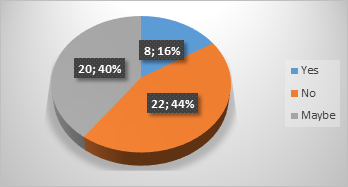
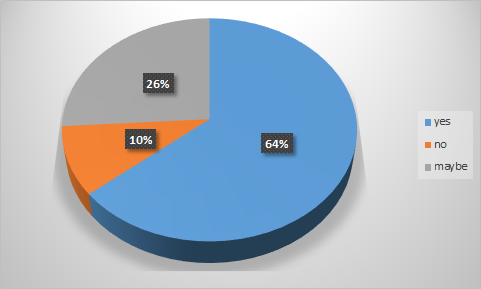
And the fifth question was about if the participants have knowledge about specialised methods of EFL teaching to students with SpLDs. The results of this question were illustrated in Graphs 2A and 2B. The data from the questionnaire revealed that 44% of the Tr teachers and 68% of foreign EFL teachers reported that they had no knowledge about specialised methods of EFL teaching to students with SpLDs; 40% of the TR teachers and 16% of foreign teachers answered as ‘Maybe’; 16% of the Tr Teachers and 16% of the foreign teachers answered as ‘Yes’. These results show that most of the EFL teachers have no idea about the special methods of EFL teaching to students with SpLDs.
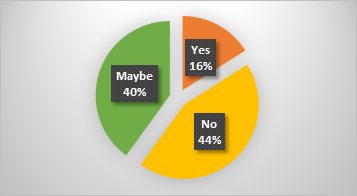
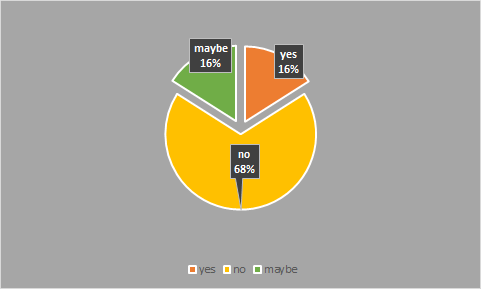
Based on these findings, it seems as if the original expectation was right. Teachers of English as a foreign language are usually in need of further instruction on the subject of SpLDs. Numerous instructors share a need for further instruction in how to assist students with learning disabilities. Numerous answers to the survey questions demonstrate how certain teachers believe they lack sufficient knowledge about SpLDs to assist their students effectively. One may argue that EFL teachers face challenges when designing programs for students with SpLDs because they are often unsure of their awareness about SpLDs and need instruction on EFL teaching techniques and strategies for SpLDs. However, it should be remembered that since this research is self-report, the results are limited to teachers' perceived awareness. As a result, it is impossible to ascertain if their understanding about SpLDs is accurate. In other terms, whether an instructor asserts that they understand what SpLDs are, there is no way to determine if their descriptions are accurate. Thus, the research is limited to discussing the teacher's experience, rather than their individual results. Additionally, since the research focuses on self-report measurements rather than classroom observations, it is unable to assess the efficacy of the teachers' classroom methods. As a conclusion, this research will only demonstrate whether instructors aim to assist students with SpLDs in their classrooms; it cannot demonstrate their success in educating students with SpLDs or how students perceive these efforts.
Findings
The study began by examining whether teachers receive training on learning disabilities. The findings indicate that the majority of teachers had undergone insufficient or no instruction on learning disabilities. However, those teachers who have received intensive training on SpLds did so on their own initiative. While it seems teachers hardly receive any substantial training on SpLds, the results did reveal that the vast majority of teachers seem remarkably eager to learn more on this subject. Additionally, the study examined teacher trust in relation to SpLds and discovered that some teachers felt nervous while teaching certain subjects. On the other hand, teachers' general instructional views regarding the needs of students with SpLds vary considerably. Nonetheless, results suggest that weakness is not uncommon among EFL teachers.
According to the findings, there seem to be some key challenges to assisting students with SpLds. According to the SEND Code of Practice by the Department for Education (2015) we, as teachers, are expected to provide an education that: achieves the best educational and other outcomes possible; enables children to develop confidence, with an increasing ability to communicate their own views; and prepares them for the transition to compulsory education. However, we can not. And schools are supposed to attain excellence; make the students become self-assured individuals who lead fulfilling lives make a successful transition to adulthood, whether through employment, further or higher education, or training encourage young people to participate in discussions about their aspirations, needs, and the support they believe will best assist them; promote student independence and facilitate successful transitions to employment and/or higher education, independent living, good health, and community participation; plan incremental steps toward these longer-term goals – taking into account the unique needs of each child or young person – and put support in place to help them be achieved (a graduated approach). Whether they are good at providing these is disputable. The primary impediment is a lack of comprehension, which has already been addressed in this research. Another obstacle is teachers' lack of confidence, which stems from a lack of knowledge on how to teach EFL successfully to students with SpLDs.
In summary, teachers usually seem to be prepared to support students with SpLDs to solve their problems. On the other hand, teachers are typically the ones who recognize SpLds to some extent, but have little experience on the topic, which increases the variability in their approaches to teaching students with SpLds. The majority of teachers believe that SpLDs instruction would benefit teacher-training programs and would provide useful instructional information.
Process
This project is planned to last for nine months, starting from May 2022 till February 2023.
- May 2022: Pre-Test: A questionnaire will be carried out with the participation of teachers of English as a second language and regular learners.
- June- July 2022: Research Conducting: Under the guidance of the experts on the ELT field, research on teaching English as a second language to the learners with SpLDs. The research topics will be on the characteristics of the learners with SpLDs; new approaches for teaching English as a second language to these learners; teaching strategies for developing four pillar skills of English - listening, reading, speaking and writing-, qualifications of the classroom materials. After collecting the data, there will be an analysing and conclusion process of the study.
- August 2022: Designing the website, social media accounts of the project and the dissemination of the project.
- September 2022: Preparing the brochures and booklets of the project.
- October 2022: International Seminar (Webinar) Organisation: With the participation of the academic people, teachers of English as a second language, school principals and parents, there will be an informing seminar which aims to raise awareness to the learning problems of students with SpLDs; teaching methodology on how to teach English to these students; sample good practises sharing.
- November- December 2022: MOOC on EPALE:
- Most common learning difficulties
- The characteristics of students with SpLDs
- New Approaches for Teaching English to students with SpLDs
- How to Improve These Students’ Four Skills- Reading/ Listening/ Speaking/ Writing
- Designing Materials and Classroom Activities for students with SpLDs
- Assignments for the participants: Designing An English Lesson Plan for the students with SpLDs - Peer Assessment
- January 2023: Organising the book with the specialists
- February 2023: Post-Test: A questionnaire will be carried out with the participation of teachers of English as a second language and regular learners; Comparing the results with Pre-Test; Reporting the project and printing & shipping the project book
The learners' age range will be 8-10. We will work with a group of participants including students with SpLDs, regular students, teachers of English as a second language, school principal, parents of the participant students.
To get the most reliable and valid results, we will collaborate with the experts. We're going to interview university scholars about the subject and set up some specific classroom strategies for educators. We will carry out research and prepare an article to be sent to English teachers across Europe on the subject. Furthermore, we will do our utmost to contribute to the growth of these children's academic and social performance with the right preparation and with the expectation that every child should learn.
In the project, we strive to bring people together through two key aspects. The learner aspect is one of them: there will be certain operations where all learners need to work together. That's what true inclusion will be. The students will learn from each other, display empathy for each other and understand their similarities. They can learn English together, work collaboratively, and also develop their communication skills by working together. The teacher aspect is the other key aspect: Teachers will also work together and the importance of peer learning and collegiality will be felt. They will address their challenges and find solutions, share their perspectives, and define a vision and a roadmap. For each learner, we will build a supportive learning climate. We will look for other possible factors that impact the learning or inclusion of these students and attempt to remove these factors to provide a more safe and enjoyable atmosphere in the classroom and school environment.
As learners with learning disabilities are the focus group of the project, they will be actively involved in the project and the greatest change will be in their lives. They'll be able to read, communicate and feel confidence in English. Without bias and judgement, they would be able to feel a sense of belonging to the society in which they live, the school they go to, and friendship. Regular learners will be involved in the project indirectly, and they will be able to have a sense of empathy, tolerance and after working together they will feel a sense of pride in themselves. Teachers will have the right preparation and profound knowledge of how to teach SpLDs to students will be given. They're going to feel confident and proficient. And the study and the results of the project will support some academic individuals as the project will make a significant contribution to the ELT field.
It is expected that this project will continue for nine months. But there may be more studies that are focused on this project after the final of the project process. And also it may inspire several teachers to work on the same subject with minor changes. We work with students from 10 to 15 years of age, but with older or younger ones, the age range may shift for other projects. We are working on English as a second language for the project, but the topic may change. Maths teachers may be there who want to study it, or maybe teachers of the first language may be working on it. With the changing technologies and developing research, the methods and ways to teach to SpLDs learners may alter. There may be other English teachers who want to improve this project and transform this into an international project where schools can work cooperatively. All in all, after the project has officially concluded, it will find a way to grow.
References
dysgraphia. (n.d.). The Merriam-Webster.Com Dictionary. Retrieved April 8, 2021, from https://www.merriam-webster.com/dictionary/dysgraphia
dyslexia. (n.d.). The Merriam-Webster.Com Dictionary. Retrieved April 8, 2021, from https://www.merriam-webster.com/dictionary/dyslexia
Fletcher, J. M., & Grigorenko, E. L. (2017). Neuropsychology of learning disabilities: The past and the future. Journal of the International Neuropsychological Society: JINS, 23(9-10), 930.
Ganschow, L., Sparks, R., & Schneider, E. (1995). Learning a Foreign Language: Challenges for Students with Language Learning Difficulties. International Journal of the British Dyslexia Association, 1, 75-95.
Kelly, K. (2021, February 6). Learning a foreign language with dyslexia. Understood.Org. https://www.understood.org/en/learning-thinking-differences/child-learning-disabilities/dyslexia/learning-a-foreign-language-with-dyslexia
Lama, A. (2019). Difficulties in English Language Learning for Students with Dyslexia. SEEU Review, 14(1), 196–206. https://doi.org/10.2478/seeur-2019-0011
Learning disability. (2021, March 31). En.Wikipedia.Org. https://en.wikipedia.org/wiki/Learning_disability
learning disability. (n.d.). The Merriam-Webster.Com Dictionary. Retrieved April 8, 2021, from https://www.merriam-webster.com/dictionary/learning%20disability
learning disorder. (n.d.) WordNet 3.0, Farlex clipart collection. (2003-2008). Retrieved April 12 2021 from https://www.thefreedictionary.com/learning+disorder
learning difficulty. (n.d.). The Merriam-Webster.Com Dictionary. Retrieved April 8, 2021, from https://www.merriam-webster.com/dictionary/learning%20difficulty
Mitchell, David.( 2008). What Really Works in Special and Inclusive Education: Using Evidence-based teaching strategies .London and New York: Rutledge, Taylor and Francis Group.
Morin, A. (2021, April 16). Multisensory instruction: What you need to know. Www.Understood.Org. https://www.understood.org/en/school-learning/partnering-with-childs-school/instructional-strategies/multisensory-instruction-what-you-need-to-know
Otanjac, M. (2016). Students with language learning disabilities and difficulties in a foreign language classroom. Special Education and Rehabilitation, 15(4), 461-474.
Survey of Learning Disabilities in Primary Schools. (2014). Unicef BECO. https://www.unicef.org/Learning_Diasbilities_Report_Interactive.pdf
Types of learning disabilities – learning disabilities association of america. (n.d.). Learning Disabilities Association of America. Retrieved April 11, 2021, from https://ldaamerica.org/types-of-learning-disabilities/
UNESCO’s new policy guidelines on inclusion in education. (n.d.). 49Http://Www.Unesco.Org/. Retrieved April 5, 2021, from http://www.unesco.org/new/en/media-services/single-view/news/unescos_new_policy_guidelines_on_inclusion_in_education/
United Nations. (1948, December 10). Universal declaration of human rights. https://www.un.org/en/about-us/universal-declaration-of-human-rights#:%7E:text=Article%2026,on%20the%20basis%20of%20merit.
Vinson, Betsy Partin. (2006). Language Disorders Across the Lifespan. Belmont: Cengage Demar. ISBN 978-1-4180-0954-0.
Please check the Pilgrims f2f courses at Pilgrims website.
Please check the Pilgrims online courses at Pilgrims website.
English For All
Ozgu Ozturk, Turkey